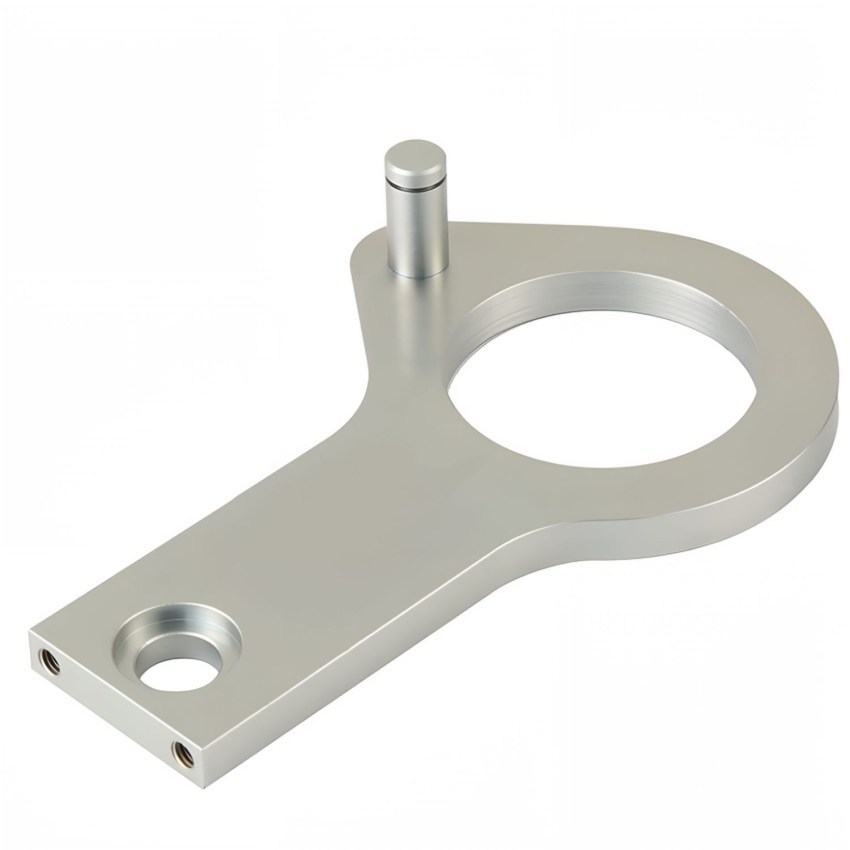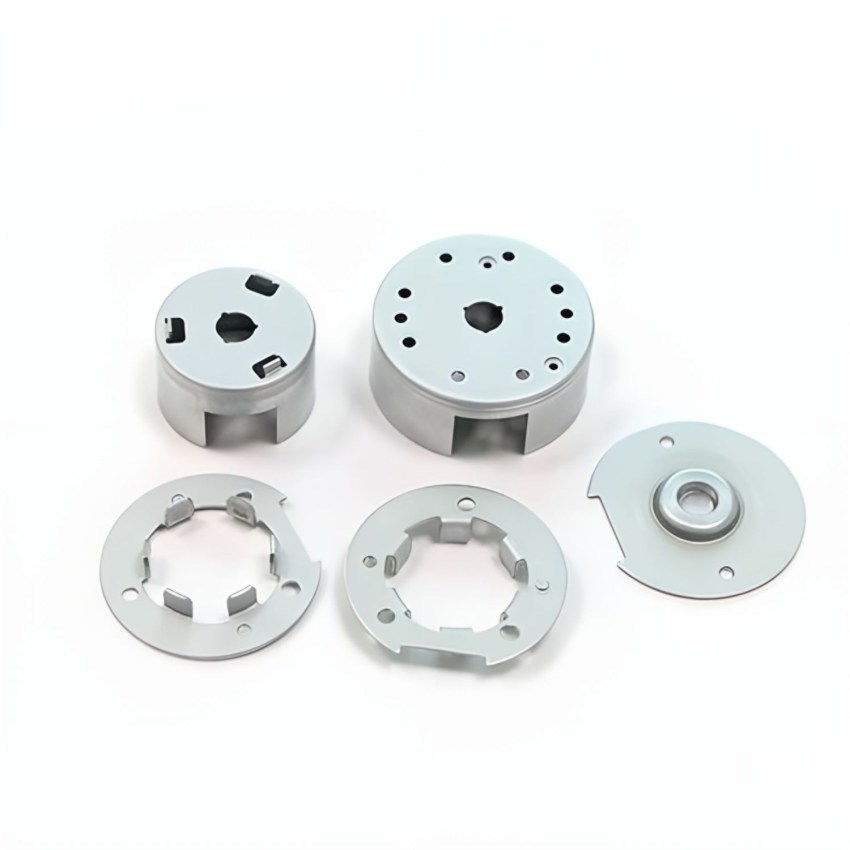Unlocking Precision: A Comprehensive Guide to CNC Metal Working Techniques
Release time:
2025-04-10
Unlocking Precision: A Comprehensive Guide to CNC Metal Working Techniques Table of Contents Introduction to CNC Metal Working What is CNC (Computer Numerical Control)? The Evolution of CNC Technology Benefits of CNC Metal Working Techniques Understanding the CNC Machining Process Popular CNC Metal Working Techniques CNC Milling CNC Turning

Unlocking Precision: A Comprehensive Guide to CNC Metal Working Techniques
Table of Contents
- Introduction to CNC Metal Working
- What is CNC (Computer Numerical Control)?
- The Evolution of CNC Technology
- Benefits of CNC Metal Working Techniques
- Understanding the CNC Machining Process
- Popular CNC Metal Working Techniques
- Essential Tools and Technologies in CNC Machining
- Common Materials Used in CNC Metal Working
- Best Practices for CNC Metal Working
- The Future of CNC Metal Working Techniques
- Conclusion
- Frequently Asked Questions
Introduction to CNC Metal Working
CNC (Computer Numerical Control) metalworking has revolutionized the manufacturing landscape by providing unparalleled precision and efficiency. As industries continue to demand higher quality components produced at faster rates, understanding CNC metalworking techniques becomes essential. This guide aims to dissect the various aspects of CNC technology, its advantages, popular techniques, tools, and the future trajectory of metalworking.
What is CNC (Computer Numerical Control)?
CNC is a system that automates the control of machines using a computer program. This technology allows for precise machining of materials by translating design specifications into machine-readable instructions. CNC systems can manage machines like routers, mills, lathes, and plasma cutters, enabling them to execute operations with high accuracy and repeatability.
The Evolution of CNC Technology
The origins of CNC can be traced back to the 1940s and 50s when early forms of numerical control (NC) were developed using punched tape to control the movements of machines. The introduction of computers in the 1960s marked a significant shift, allowing for more complex programming and control capabilities. Over the decades, CNC technology has advanced remarkably, incorporating sophisticated software and hardware that enhance functionality, flexibility, and user-friendliness.
Benefits of CNC Metal Working Techniques
CNC metalworking offers a multitude of advantages that set it apart from traditional machining methods:
1. Enhanced Precision and Accuracy
CNC machines can produce parts with extremely tight tolerances, ensuring a higher level of quality and consistency across production runs. This precision is vital in industries such as aerospace, automotive, and medical manufacturing.
2. Increased Efficiency and Productivity
The automation of machining processes allows for continuous operation, resulting in higher output levels compared to manual methods. CNC machines can run unattended for extended periods, maximizing productivity.
3. Flexibility and Versatility
CNC systems can easily switch between different tasks and materials, making them suitable for both short runs and large-scale productions. This versatility is particularly beneficial for custom manufacturing and prototyping.
4. Reduced Waste and Cost Savings
CNC machines optimize material usage by using precise cutting paths, which minimizes waste. Additionally, the efficiency of CNC processes often translates to lower labor costs and shorter turnaround times.
Understanding the CNC Machining Process
The CNC machining process generally involves several key steps:
1. Designing the CAD Model
The process begins with creating a digital model using Computer-Aided Design (CAD) software. This model serves as the blueprint for the CNC machine.
2. Converting to G-code
The CAD file is then converted into G-code, the language understood by CNC machines. This code includes specific commands that dictate the machine's movements.
3. Setting up the CNC Machine
Before machining, operators must set up the machine by installing the necessary tools, securing the workpiece, and inputting relevant parameters.
4. Machining
Once everything is set, the CNC machine executes the programmed commands to produce the desired part.
5. Quality Control
After machining, the finished product undergoes rigorous quality checks to ensure it meets the required specifications.
Popular CNC Metal Working Techniques
CNC metalworking encompasses various techniques tailored to different applications and materials. Here are some of the most widely used methods:
CNC Milling
CNC milling involves rotating a cutting tool to remove material from a stationary workpiece. This technique is ideal for creating complex shapes and features, making it a staple in many manufacturing processes.
CNC Turning
CNC turning utilizes a rotating workpiece and a stationary cutting tool to remove material. This technique is typically used for cylindrical parts and is known for its efficiency in producing high-volume runs.
CNC Drilling
CNC drilling involves creating holes in a workpiece using a rotating drill bit. This technique is crucial for producing components that require precision holes for assembly or fastening.
CNC Laser Cutting
Laser cutting employs high-powered lasers to cut through materials with exceptional precision. This technique is particularly effective for intricate designs and is commonly used in industries requiring detailed fabrications.
Essential Tools and Technologies in CNC Machining
To achieve optimal results in CNC metalworking, several tools and technologies are integral to the process:
1. CNC Software
Sophisticated software applications enable the design, programming, and simulation of CNC operations. Popular options include Mastercam, SolidWorks, and Fusion 360.
2. Cutting Tools
The choice of cutting tools, such as end mills, drills, and inserts, significantly impacts machining performance. Selecting the right tool for the material and application is crucial for achieving precision.
3. Tool Holders and Fixtures
Effective tool holders and fixtures ensure stability and accuracy during machining. They are vital for maintaining the correct positioning and alignment of the workpiece.
4. Measurement and Inspection Tools
Incorporating measurement and inspection tools, such as calipers, micrometers, and coordinate measuring machines (CMMs), is essential for quality assurance and ensuring that parts meet specifications.
Common Materials Used in CNC Metal Working
CNC metalworking can accommodate a variety of materials, each with unique properties:
1. Aluminum
Lightweight and corrosion-resistant, aluminum is a popular choice for many CNC applications due to its machinability.
2. Steel
Steel, known for its strength and durability, is commonly used in various industrial applications, from automotive to aerospace.
3. Titanium
Titanium’s high strength-to-weight ratio and resistance to corrosion make it ideal for high-performance applications, especially in the aerospace industry.
4. Brass
Brass is often utilized for parts requiring electrical conductivity and aesthetic appeal. Its machinability makes it a favored choice for CNC operations.
Best Practices for CNC Metal Working
To maximize the effectiveness of CNC metalworking, adhering to best practices is essential:
1. Regular Maintenance
Routine maintenance of CNC machines ensures optimal performance and reduces the likelihood of unexpected breakdowns.
2. Continuous Training
Investing in ongoing training for operators keeps them updated on the latest technologies and techniques, enhancing productivity and safety.
3. Data-Driven Decision Making
Leveraging data analytics can help identify inefficiencies and areas for improvement in the CNC process, leading to better outcomes.
4. Effective Communication
Facilitating open communication among team members fosters collaboration and problem-solving, ultimately leading to enhanced productivity.
The Future of CNC Metal Working Techniques
As technology continues to evolve, the landscape of CNC metalworking is poised for exciting advancements:
1. Integration of Artificial Intelligence
AI and machine learning are expected to play a more significant role in optimizing CNC operations, from predictive maintenance to adaptive machining.
2. Advanced Materials
The development of new materials with enhanced properties will open up new possibilities for CNC applications.
3. The Rise of Automation
Further automation in CNC machining processes will streamline operations and reduce labor costs, paving the way for even greater efficiency.
4. Sustainability Initiatives
With growing environmental concerns, the CNC industry is likely to adopt more sustainable practices, including reducing waste and energy consumption.
Conclusion
CNC metalworking techniques play a pivotal role in modern manufacturing, offering unmatched precision, efficiency, and versatility. By understanding the various CNC methods, tools, and best practices, industry professionals can leverage this technology to optimize production and meet the evolving demands of the market. As we look to the future, embracing emerging technologies and sustainable practices will be essential for maintaining a competitive edge in the CNC landscape.
Frequently Asked Questions
1. What is the primary advantage of CNC over traditional machining methods?
The primary advantage of CNC machining is its ability to produce highly accurate and consistent parts efficiently, reducing human error and increasing productivity.
2. Can CNC machines work with materials other than metal?
Yes, CNC machines can work with a variety of materials, including plastics, wood, and composites, depending on the specific machine and tooling used.
3. How do I choose the right CNC machine for my needs?
Choosing the right CNC machine depends on your specific applications, material types, production volume, and budget. Evaluating these factors will help you make an informed decision.
4. What maintenance is required for CNC machines?
Regular maintenance includes cleaning, lubrication, and inspection of moving parts, as well as checking for wear and tear on cutting tools. Following the manufacturer's maintenance schedule is crucial.
5. Is CNC machining suitable for small production runs?
Yes, CNC machining is suitable for both small and large production runs, making it a versatile choice for custom manufacturing and prototyping.
Key words:




